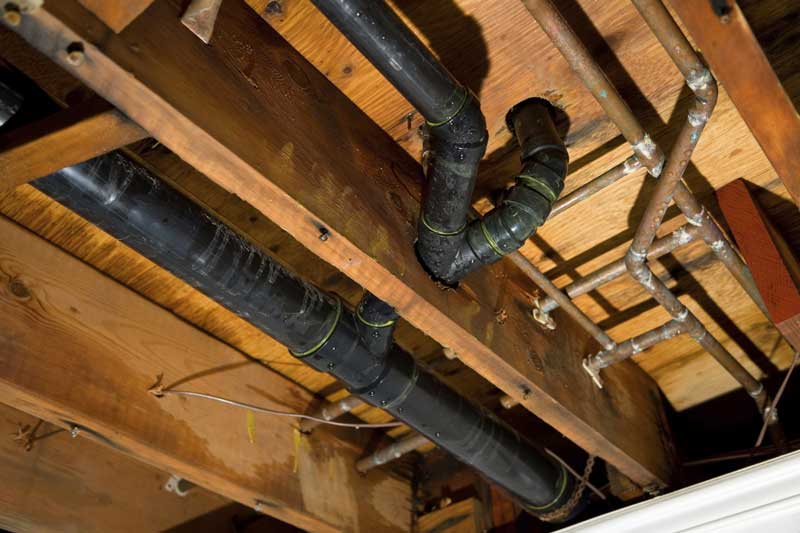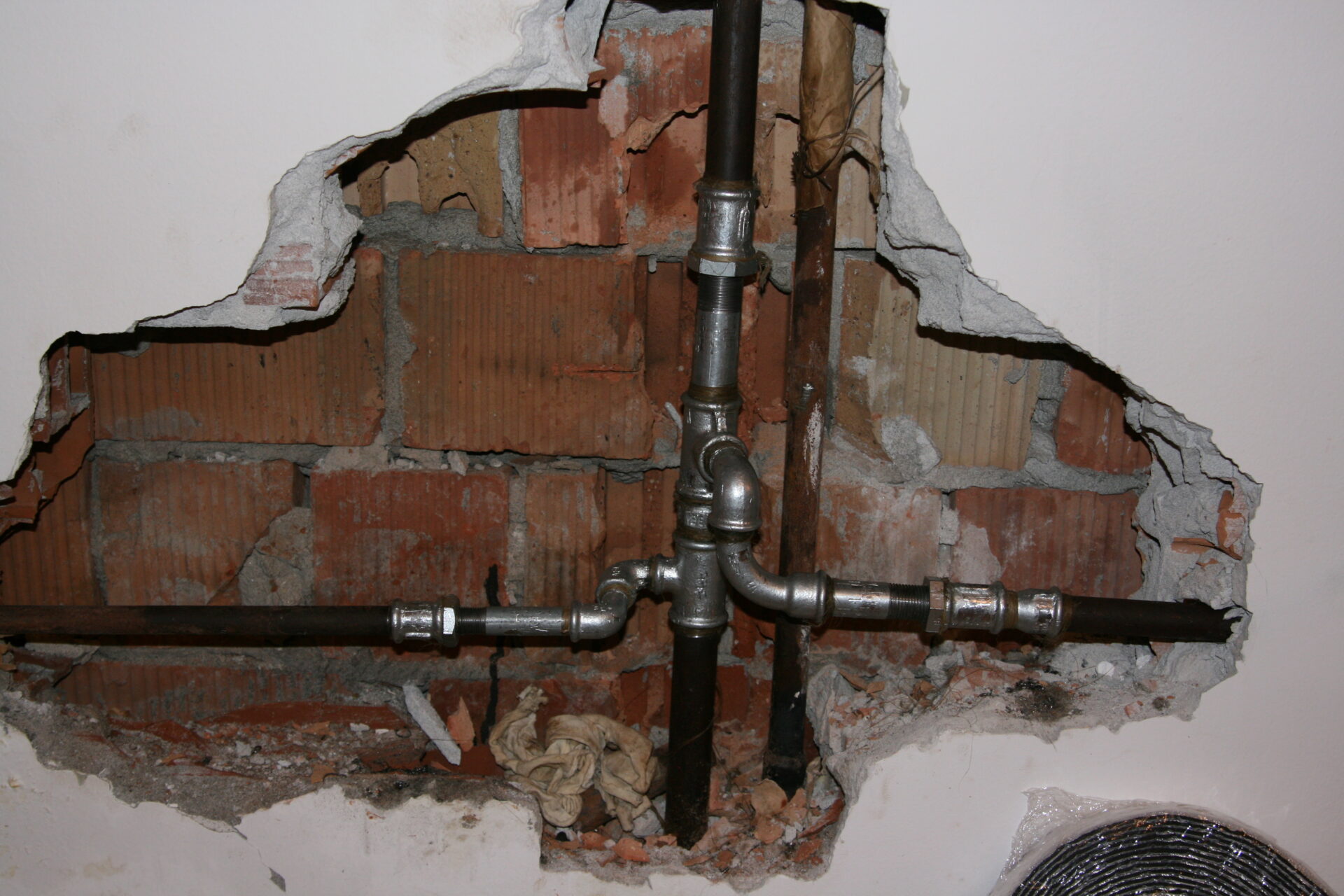Expert Advice on Managing Plumbing in Older Homes
Expert Advice on Managing Plumbing in Older Homes
Blog Article
Just how do you really feel in regards to Common Plumbing Challenges In Old Buildings?

Older homes frequently feature appeal, character, and background, however they can also bring a host of pipes issues. Whether you're managing aging pipelines, low water pressure, or leakages, knowing just how to deal with these usual issues is essential to keeping a risk-free and functional home. In this overview, we'll explore the common plumbing difficulties faced by older homes and supply useful remedies to keep your pipes in leading shape.
Understanding Typical Pipes Problems
Aging Pipelines
One of one of the most common concerns in older homes is aging pipelines. Relying on the age in which your home was developed, the pipelines may be made from materials that have weakened with time, such as galvanized steel, cast iron, and even lead. These products can rust, come to be weak, or create leaks, causing water damages and potential health hazards.
Water Quality Testing
Older pipelines can affect the top quality of your water. Conduct a water quality examination to check for impurities such as lead, rust, or other contaminations that may be presented by maturing pipelines.
Solutions for Common Pipes Issues
Replacing Aging Pipelines
If your home has old, deteriorating pipelines, take into consideration replacing them with contemporary materials like copper or PEX. This can be a substantial financial investment, but it will certainly avoid future problems and improve the security and dependability of your pipes system.
Fixing Low Tide Stress
To repair low tide stress, beginning by cleansing or changing old components and getting rid of mineral accumulation in the pipes. If the problem persists, it may be necessary to replace sections of rusty pipes.
Repairing and Changing Dripping Pipelines
For tiny leakages, you can utilize pipeline clamps or epoxy putty as a momentary repair. Nevertheless, it's finest to replace leaking pipes totally to stay clear of more damages.
Updating Fixtures
Upgrading old fixtures to modern-day, water-efficient versions can boost your home's pipes efficiency and lower water intake. Try to find fixtures with the WaterSense label for the best effectiveness.
Taking Care Of Pipeline Deterioration
If your pipelines are rusted, changing them with corrosion-resistant products like copper, PVC, or PEX is the most effective service. Routine evaluations and water high quality maintenance can aid stop additionally rust.
Low Water Stress
If you're experiencing low tide pressure, it could be as a result of natural resources, rust inside the pipes, or old fixtures that are no longer operating successfully. This can be a significant hassle, especially in locations like showers and sinks.
Dripping Pipelines
Leaks are an additional constant problem in older homes, often brought on by rusty or worn-out pipes. Also little leaks can bring about considerable water damage, mold and mildew development, and boosted water expenses otherwise attended to quickly.
Outdated Components
Outdated plumbing components such as faucets, commodes, and showerheads not only look old but might also be less effective, prone to leakages, or incompatible with modern-day plumbing criteria.
Pipe Corrosion
Deterioration is a common trouble in older pipes, specifically those made from galvanized steel or cast iron. Rusty pipes can limit water flow, create discoloration, and at some point result in leakages or pipe ruptureds.
Evaluating the Problem of Your Plumbing
Checking Visible Pipes
Beginning by examining any visible pipelines in your home, such as those in basements, crawl spaces, or under sinks. Seek indications of deterioration, leakages, or corrosion, which can indicate underlying problems.
Looking for Leaks
Check for leakages by inspecting locations around taps, toilets, and under sinks. You can additionally check your water meter before and after a period of no water make use of to discover surprise leaks.
When to Call an Expert
While some pipes issues can be handled with DIY remedies, there are times when it's ideal to call in an expert. If you're taking care of significant leakages, extensive corrosion, or are not sure concerning the condition of your pipelines, a licensed plumbing technician can provide professional analysis and repair.
Preventive Maintenance Tips
Normal Assessments
Frequently inspect your pipes system for indications of deterioration. Catching issues early can avoid expensive repairs down the line.
Water Pressure Policy
Ensure your water pressure is within the suggested array to stay clear of stressing your pipes and components. A plumbing can mount a stress regulatory authority if required.
Water Top Quality Upkeep
Mount water filters or conditioners if your water quality is poor. This can protect your pipes and components from damages brought on by tough water or impurities.
Aggressive Pipeline Substitute
If your home has older pipelines, think about positive replacement before significant issues arise. This can conserve you from emergency situation fixings and water damages.
Final thought
Taking care of pipes concerns in older homes calls for a mix of alertness, preventative upkeep, and timely upgrades. By understanding the typical challenges and knowing when to look for expert help, you can guarantee your plumbing system remains useful and trusted for many years to come.
Common Plumbing Issues in Older Homes and How to Fix Them
Owning an older home in Australia comes with its unique charm and a set of challenges, especially when it comes to plumbing. The Sunshine Coast has many older properties that can harbour plumbing problems that aren t just inconvenient but potentially costly. Here s a look at some common plumbing issues in older homes and expert advice on how to handle them.
Outdated Piping Materials
Many older homes were built with galvanised steel, cast iron, or even lead pipes, materials that are far from ideal by today s standards. Galvanised pipes are prone to corrosion and clogging, while lead pipes pose serious health risks.
How to Fix:
Replacing old pipes is a job for a professional. Upgrading to copper or PVC piping not only enhances water quality and flow but also increases the property s safety and value. If you suspect your home has outdated materials, a licensed plumber can conduct a thorough inspection and recommend the best course of action.
Corrosion and Pipe Degradation
Over time, exposure to water and minerals can cause pipes to corrode, leading to leaks, bursts, and water contamination. Corrosion is especially common in homes over 50 years old.
How to Fix:
Regular inspections can catch early signs of corrosion. If corrosion is found, the affected section of piping often needs to be replaced. For homes with extensive corrosion, a complete plumbing overhaul might be necessary. It s crucial to consult with a plumbing expert to understand the extent of the issue.
Tree Root Intrusion
Older neighbourhoods usually have mature trees whose roots can intrude into pipe lines, causing blockages or damage. This is particularly problematic for sewer lines, where roots seek out water sources.
How to Fix:
A plumber can use a specialised camera to inspect sewer lines for root intrusion. If roots are a problem, methods like root cutting or hydro-jetting can clear the obstruction. In severe cases, part of the pipe may need replacing. Consider root barriers around the piping to prevent future issues.
Inadequate Water Pressure
Low water pressure in older homes can be due to various factors, including corroded water lines, sediment build-up in pipes, or outdated fixtures.
How to Fix:
First, check if the low pressure is isolated to one area or throughout the house. Replacing old fixtures can sometimes resolve the issue. However, if the problem is more widespread, it might be due to sediment or corrosion. Flushing the system or replacing the affected pipes usually restores normal pressure. Again, a professional assessment is advisable.
Outdated Fixtures
Older homes often feature fixtures that are not only visually dated but functionally inefficient. This includes everything from toilets and taps to showerheads and washing machine hoses.
How to Fix:
Updating these fixtures can improve both water efficiency and the aesthetic appeal of your home. Modern fixtures are designed to conserve water, which can significantly reduce your water bill and lessen your environmental impact.
Conclusion
Maintaining the plumbing in an older home requires a proactive approach. Regular checks and updates are key to preserving these beautiful properties. If you re facing plumbing issues in your older home, it s best to call on experienced professionals like Green & Gold Plumbing & Gas. With the right expertise, even the most daunting plumbing problems can be resolved, ensuring that your home s character is maintained while its functionality is enhanced.
https://gandgplumbing.com.au/common-plumbing-issues-in-older-homes-and-how-to-fix-them/

I'm very excited about and I'm hoping you liked our piece. Sharing is caring. Helping others is fun. Bless you for your time. Revisit us soon.
Request An Estimate Report this page